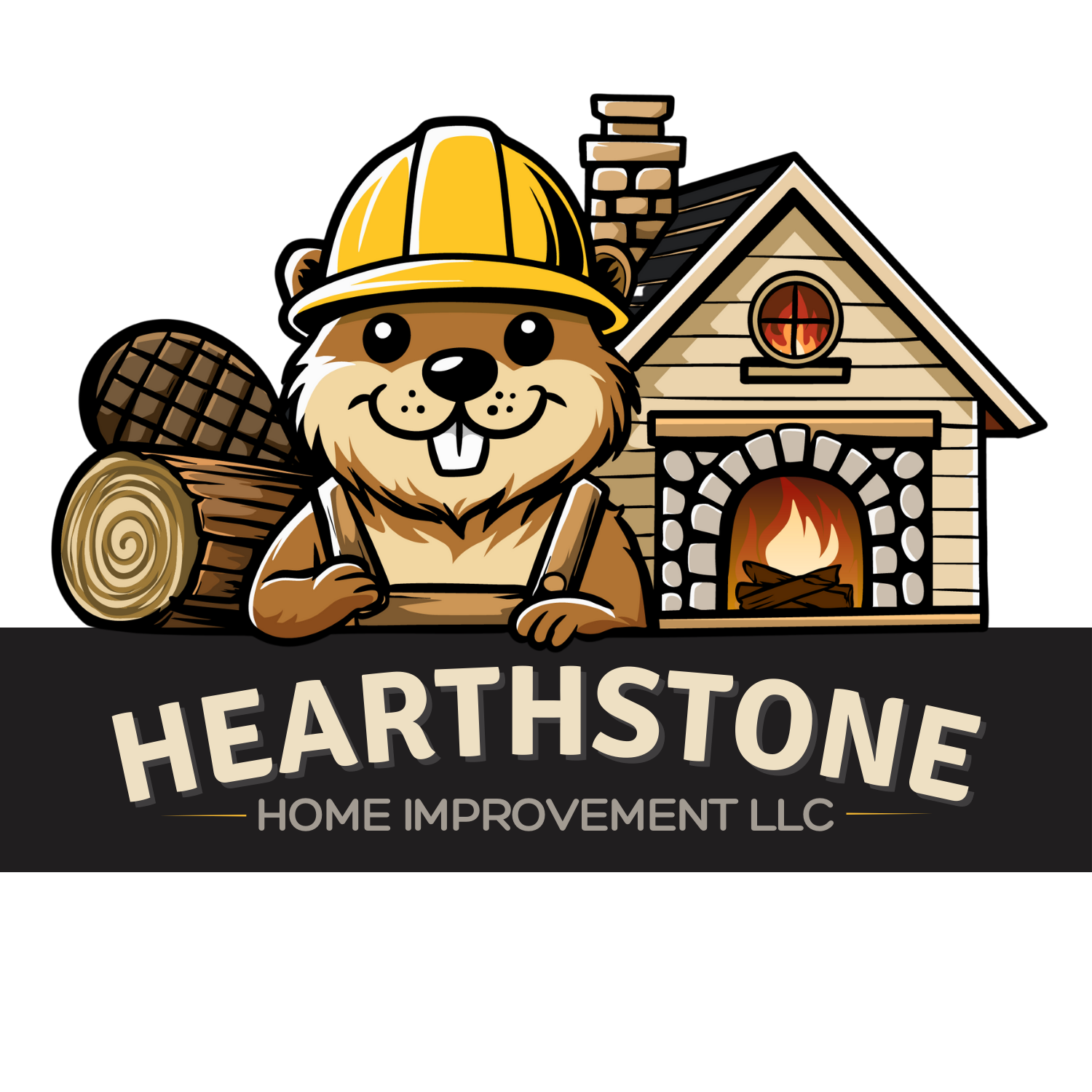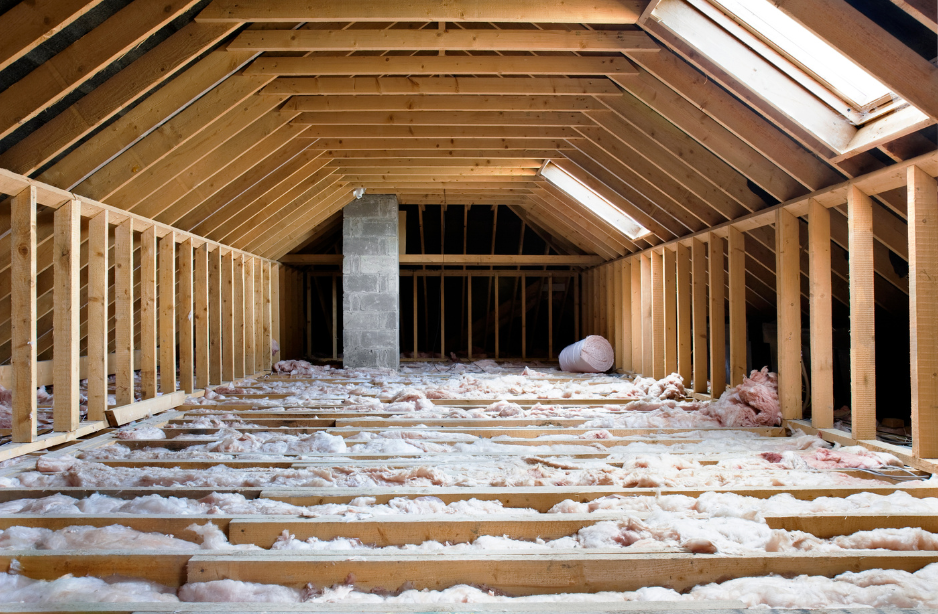When it comes to home maintenance, attic ventilation is one of the most overlooked but critical factors in overall comfort and energy efficiency. Many homeowners in Northern Virginia are unaware of the problems that poor attic airflow can cause until those issues start costing them money. If your attic is not properly ventilated, the effects will be felt throughout your entire home.
This blog post explores how poor attic ventilation affects your house from top to bottom, why it matters in our local climate, and what you can do to prevent costly damage.
What Is Attic Ventilation?
Attic ventilation refers to the system of vents that allows fresh air to flow into and out of your attic. Intake vents, usually installed under the eaves or soffits, draw in cool air. Exhaust vents, often located at the ridge or gable, let warm air escape. This movement of air regulates temperature and humidity in your attic and protects your home from seasonal extremes.
1. Poor Ventilation Increases Energy Costs
One of the biggest consequences of poor attic ventilation is higher heating and cooling bills. In the summer, trapped hot air in your attic radiates downward, making your upper floors feel like a sauna. Your air conditioning system has to work harder and longer to cool those rooms, which drives up your utility bills.
In winter, the opposite problem can happen. Moist air from inside your house rises and condenses in the attic. That moisture damages insulation and reduces its ability to block heat loss, which increases your heating costs. Either way, your wallet suffers.
2. Your Roof Takes a Hit
Your roofing system relies on proper airflow to maintain its longevity. Without ventilation, the attic heats up, baking the roof deck from underneath. This heat causes shingles to curl, warp, or wear out faster than they should.
In winter, warm air trapped in the attic can melt snow unevenly on the roof. That meltwater can refreeze at the eaves and create ice dams. Ice dams cause water to back up under shingles and leak into your home. Replacing a prematurely damaged roof is a major expense that can often be avoided with improved ventilation.
3. Moisture Build-Up Leads to Mold and Rot
Moisture is one of the most destructive elements a home can face, and poor attic ventilation allows it to linger. During cold weather, humid air from bathrooms, kitchens, and laundry areas rises and collects in the attic. If this moisture cannot escape, it condenses on cool surfaces like rafters and insulation.
Over time, this leads to mold growth, mildew, and eventually rot. Not only does this compromise the structural integrity of your home, but it can also create serious health issues for your family. Mold spores can enter your HVAC system and circulate through the house, triggering respiratory problems and allergies.
4. Insulation Becomes Less Effective
Even if your attic is well insulated, poor airflow can ruin that investment. Moisture buildup causes insulation to clump or flatten, reducing its R-value and making it less effective at keeping your home warm or cool.
If insulation is wet or moldy, it often needs to be replaced entirely. Keeping your attic properly ventilated helps preserve the integrity of your insulation and improves energy efficiency.
5. Comfort and Air Quality Decline
Hot, humid attics create uncomfortable living conditions, especially on upper floors. You may notice that your upstairs rooms are always hotter in summer and harder to keep warm in winter. This temperature imbalance can make your home less comfortable and less appealing to future buyers.
Poor attic ventilation also affects indoor air quality. Without proper exhaust, pollutants and allergens can build up in the attic and filter into your living space. Dust, mold spores, and volatile organic compounds can contribute to poor health and a lower quality of life.
6. Structural Damage Is Possible
Humidity in the attic does not stay there. It eventually spreads, affecting other areas of your home. Moisture can cause nails to rust, drywall to crack, and wood framing to weaken. Over time, this can lead to sagging ceilings, warped floors, and expensive repairs.
Even small leaks or areas of condensation can grow into major issues if left unchecked. Proper ventilation prevents the kind of hidden damage that often goes unnoticed until it is too late.
How to Spot Signs of Poor Attic Ventilation
If you are wondering whether your attic has ventilation issues, here are some common signs to watch for:
High energy bills without explanation
Hot or humid upstairs rooms
Rust on attic nails or HVAC equipment
Moldy smells or visible mildew in the attic
Shingles curling or wearing out too quickly
Ice dams in winter
Water stains on ceilings
How to Improve Attic Ventilation
The good news is that attic ventilation problems are often easy to fix. Solutions include:
Installing ridge vents, soffit vents, or gable vents
Adding attic fans to improve air movement
Sealing air leaks that allow indoor moisture to rise into the attic
Replacing damaged insulation
Ensuring a balanced ratio between intake and exhaust vents
A qualified contractor can inspect your attic, measure airflow, and recommend the right combination of improvements based on your roof’s shape and your home’s layout.
Why This Matters for Northern Virginia Homes
Homes in Northern Virginia experience a wide range of temperatures and weather conditions. From summer heatwaves to winter ice storms, your attic must be equipped to handle both. Proper ventilation ensures that your roof, insulation, and living spaces stay protected all year long.
At Hearthstone Home Improvement, we understand the challenges of our local climate and have experience solving attic airflow problems in homes just like yours.
Final Thoughts
If you have been asking yourself how poor attic ventilation can affect your entire home, the answer is clear. From higher utility bills to damaged roofing and mold problems, inadequate ventilation leads to serious and expensive consequences.
Do not wait for the signs to become obvious. If you suspect your attic needs better airflow or you are planning a roofing or insulation upgrade, contact Hearthstone Home Improvement for a professional assessment. We will help you create a healthier, more efficient home from top to bottom.

